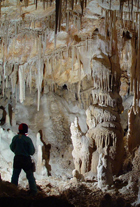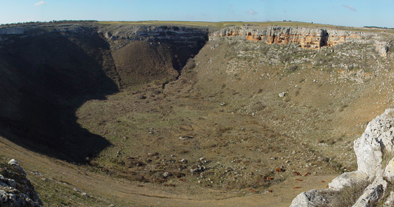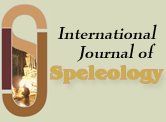Federazione Speleologica Pugliese

The birth of speleology in Apulia can be traced back to January 23rd 1938, with the discovery of the Castellana cave and the beginning of cataloguing of natural caves of the region. Prior to that date only some notes describing caves and some research into their mineralogy had been reported.
During WW2 all speleological activities stopped for some years and beginning in the 1950s the Apulian Speleology rose up again. The work of Professor Pietro Parenzan of the Centro Speleologico Meridionale, and that of Franco Orofino must be added to the activity of Professor Anelli and of the Italian Institute of Speleology, and the birth of several Speleological associations.
The extended Apulian karst territory has great potential and thanks to collaboration with the oldest national institutions research campaigns are carried out on the Murge and in the Gargano peninsula. The Commissione Grotte "Eugenio Boegan" of the Società Alpina delle Giulie, the Società di Scienze Naturali and the Gruppo Speleologico Piemontese CAI-UGET are the first extra-regional caving groups to carry out speleological research in Apulia, exploring some of the most significant and difficult natural caves of the region: the Grave di Faraualla, Grave in the territory of Minervino, and the Grava di Campolato.
The first caving groups to start exploring caves in the region were those of Altamura, Bari, Castellana Grotte, Maglie, Polignano a Mare and Putignano. Several of these are still operating, while others have been re-founded at later dates.
Between 1960 and 1970 speleological activities went through a significant acceleration. In the 1970s the tremendous surge in the evolution of exploration techniques, with the move towards descents on ropes, gave a further impetus to the explorations and prompted Apulian Speleology to forge better contacts with extra-regional associations.
In this scenario the Speleological Federation of Apulia was founded. There are two main objectives: the Regional Law on Speleology, petitioned for strongly by the Federation and instituted in 1986 (RL 32/86), and the cataloguing of the natural caves of the Region. This last project is still under construction. Together with the topographical surveys of the newly found caves, many data are inserted into a database by means of detailed sheet files. Assuming that financing by the region continues this work should be completed within the next few years.
The Federazione Speleologica Pugliese is, in any case, the combined expression of the activities carried out by the single caving groups. The results of their researches are published in the review "Itinerari Speleologici", which also reports important scientific research papers about the subterranean world. Every year the regional meeting "Spelaion" is organised by a different regional cave association. Apulian speleological results have without any doubt been extremely positive during these last few years. This is demonstrated by the more than 2,000 documented caves, the many caving expeditions within the region and internationally, the regional congresses, the sensational discoveries (like the Grotta dei Cervi at Porto Badisco or the Lamalunga cave at Altamura) and the great help given to the institution of the Speleological Museum Franco Anelli of Castellana, where the Centro di Documentazione Speleologica Pugliese "Franco Orofino" and the offices of the Federation are housed.


Federazione Speleologica Pugliese Museo Speleologico "Franco Anelli" Piazzale Anelli 70013 Castellana Grotte (BA - Italy)
Main Menu

Special cooperation and joint publications with Speleogenesis


